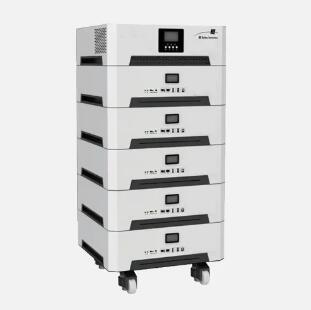Solar Electric Power System: Weighing Installation and Maintenance Costs Against Long-Term Savings
2024-12-10
As the demand for sustainable energy solutions grows, solar electric power systems have become increasingly popular for reducing reliance on fossil fuels and lowering utility bills. But like any significant investment, installing a solar power system requires careful consideration of its costs and long-term financial benefits. In this blog, we’ll explore how the installation and maintenance costs of solar electric systems compare to their long-term savings and energy production, helping you make an informed decision.
1. Understanding the Costs of Solar Electric Power System Installation
Installing a solar electric system is a big decision, both financially and environmentally. Here’s a breakdown of the primary costs involved:
- Upfront Installation Costs: These costs typically include purchasing the solar panels, inverter, mounting hardware, and labor. On average, a complete solar system can cost between $15,000 and $25,000 depending on the system’s size and the geographical location.
- Factors That Influence Costs: System size, roof complexity, and geographical location all play a role in determining the installation cost. Additionally, local and federal tax credits, such as the Solar Investment Tax Credit (ITC), can reduce the overall installation cost by 20-30%.
- Types of Systems: The cost can also vary depending on the type of system you choose. For instance, an off-grid solar system (ideal for remote locations) may cost more due to the additional components like batteries, while a grid-tied system (connected to the local utility) is generally more affordable.
Although the installation costs are relatively high upfront, the ongoing savings can offset these expenses over time.
2. Maintenance Costs: How Much Will It Cost to Keep Your System Running Smoothly?
A key advantage of solar electric systems is their relatively low maintenance requirements compared to traditional power systems. However, there are still some costs and tasks that homeowners should be aware of:
- Routine Cleaning: Solar panels need to be cleaned periodically to ensure maximum efficiency. Dust, debris, or snow buildup can reduce energy production. Cleaning costs typically range from $100 to $300 per year if you hire a professional.
- Inverter Replacement: Inverters, which convert DC electricity into usable AC electricity, generally last between 10 to 15 years. At that point, the inverter may need to be replaced, with costs ranging between $1,000 and $2,000.
- Other Maintenance: Although solar systems require minimal repairs, components may need occasional attention. Monitoring systems and wiring checks can also help to identify any performance issues before they become more costly.
While maintenance costs are relatively low, it’s essential to factor in periodic cleaning and potential inverter replacement to get an accurate picture of ongoing expenses.
3. Long-Term Savings: How Much Can You Expect to Save on Your Energy Bills?
The primary reason people invest in solar electric power systems is the potential savings on electricity bills. Over time, the energy generated by solar panels significantly reduces the amount of electricity you need to purchase from the grid. Here’s how the savings add up:
- Electricity Bill Reduction: Solar systems can offset 50% to 100% of your electricity needs, depending on system size and energy consumption. This can translate to savings of $10,000 to $30,000 over 20 years.
- Increase in Property Value: Homes equipped with solar power systems typically see an increase in value. Studies suggest that solar homes can sell for 4% to 6% more than comparable non-solar homes.
- Energy Independence: Solar systems protect you from fluctuating energy prices. As electricity rates rise over time, you’ll continue to pay less for energy, as your solar system will provide a significant portion of your electricity.
4. Payback Period and ROI
The payback period is the time it takes for your solar system to pay for itself through energy savings. In general, homeowners can expect to see a payback period of 6 to 10 years for a typical solar power system. Once the payback period is complete, the system begins producing free electricity, and you can continue to save money for the next 20-25 years of its life.
In terms of return on investment (ROI), solar power systems generally offer an ROI of 20% to 30% per year, making them an attractive long-term investment.
While the installation and maintenance costs of solar electric power systems can be significant, the long-term financial benefits are substantial. The combination of energy savings, low maintenance costs, and increased property value make solar systems a wise investment that can pay off within a decade and continue to provide returns for decades afterward.
By choosing solar, you’re not just investing in your home or business—you're investing in a sustainable and cost-effective future.



